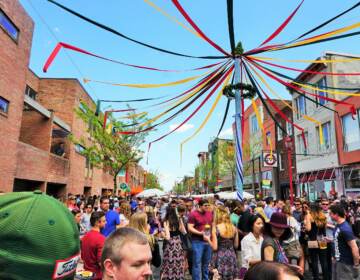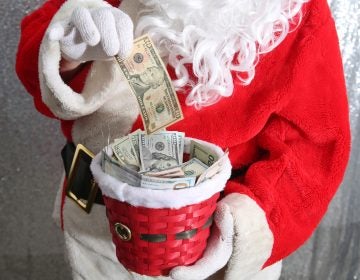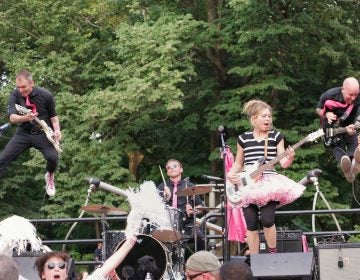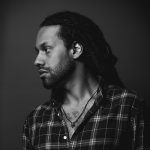Philly Fashion Week models the city’s diversity
People of color are the norm, rather than a rarity. Body types run the gamut of what you’d expect to see as you walk down the street. People of all ages can find a role.
-
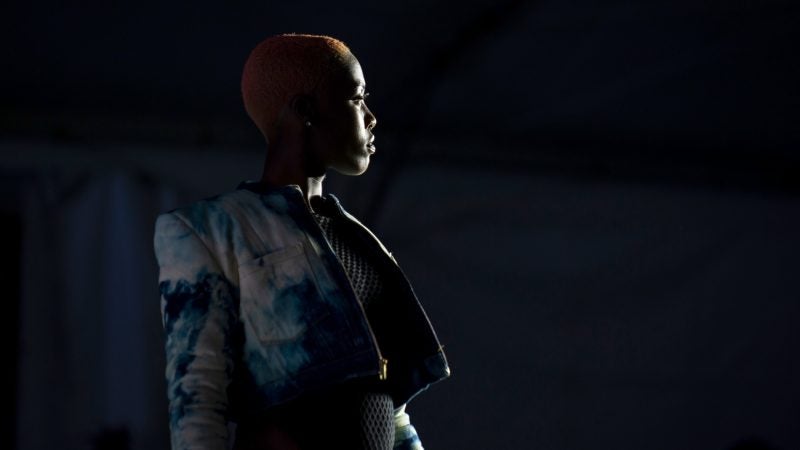
A model poses at the end of the runway during Philadelphia Fashion Week, held at Dilworth Park. (Kriston Jae Bethel for WHYY)
-
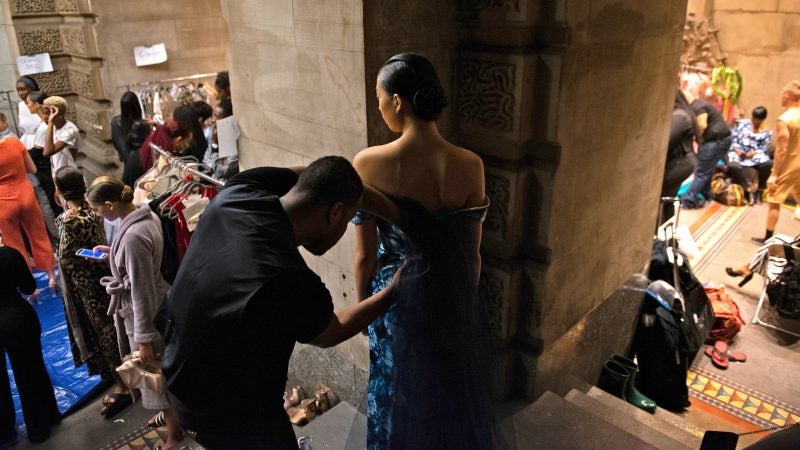
Designer Reginald Lee makes adjustments to one of his evening wear designs at Philadelphia Fashion Week, held at Dilworth Park. (Kriston Jae Bethel for WHYY)
-
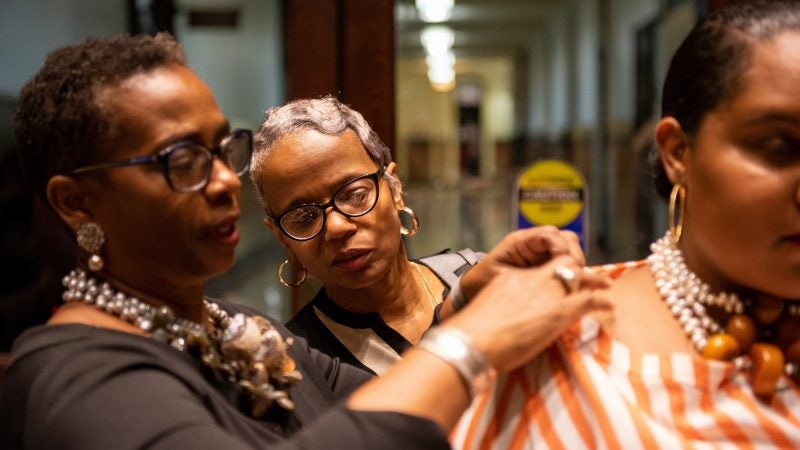
Donna Thomas looks on as her sister-in-law, designer Julia Turner Lowe of JTL Designs, makes adjustments before the Friday night runway show at Philadelphia Fashion Week, held at Dilworth Park. (Kriston Jae Bethel for WHYY)
-

A model is met with cheers as she takes the runway at Philadelphia Fashion Week, held at Dilworth Park. (Kriston Jae Bethel for WHYY)
-

Maylynn Tamarez has her makeup retouched backstage at Philadelphia Fashion Week, held at Dilworth Park. (Kriston Jae Bethel for WHYY)
-
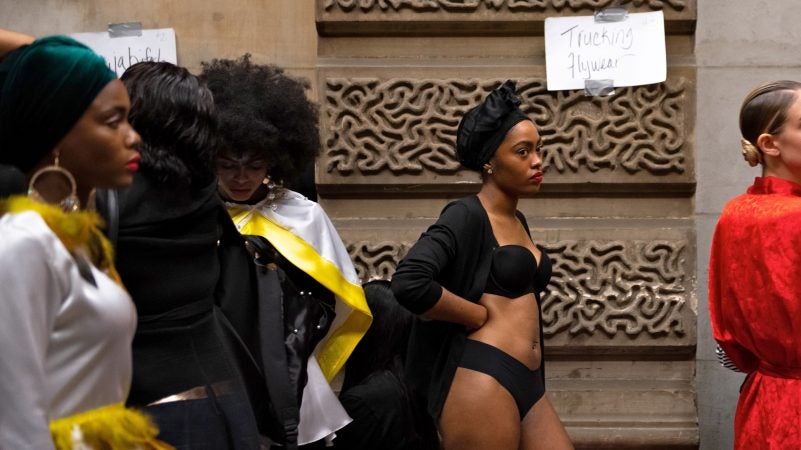
Bella Renee waits backstage to be fitted for the runway at Philadelphia Fashion Week, held at Dilworth Park. (Kriston Jae Bethel for WHYY)
-
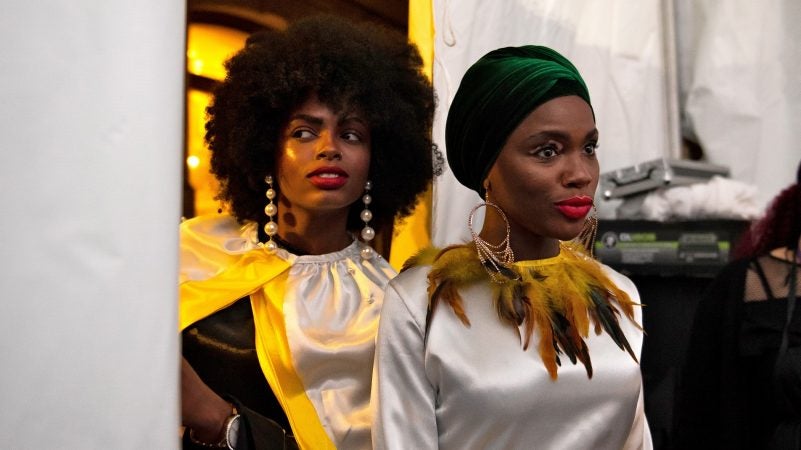
Models line up before taking to the runway at Philadelphia Fashion Week, held at Dilworth Park. (Kriston Jae Bethel for WHYY)
-
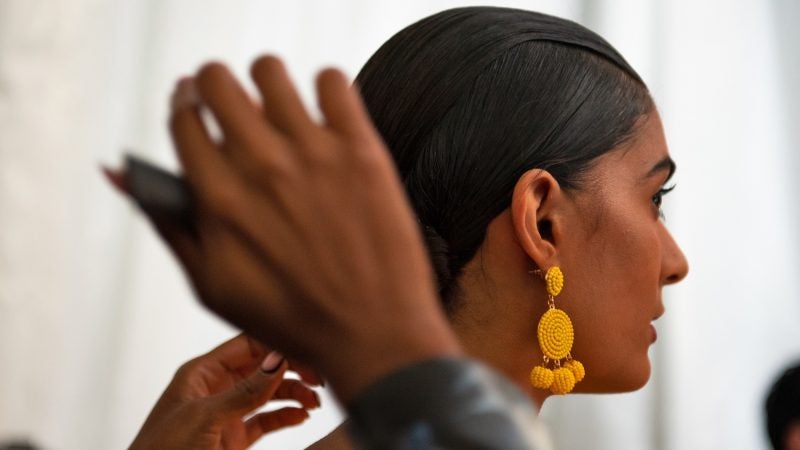
A stylist makes final touch-ups to a model's hair moments before she steps onto the runway at Philadelphia Fashion Week, held at Dilworth Park. (Kriston Jae Bethel for WHYY)
-
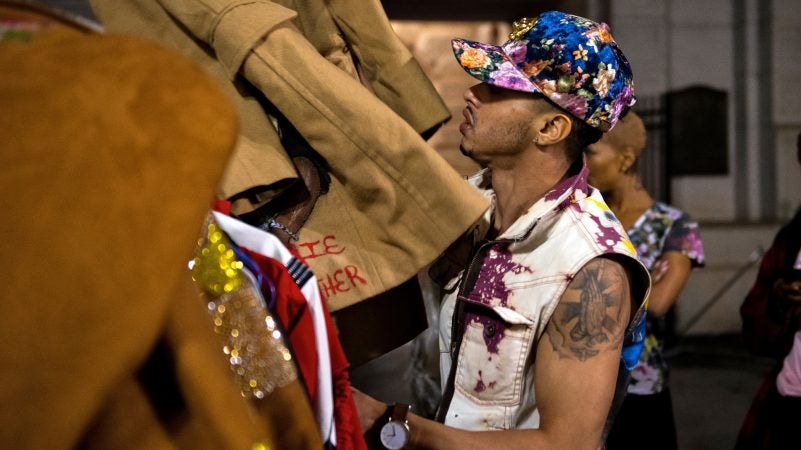
New York designer Check Fernandez preps his collection backstage at Philadelphia Fashion Week, held at Dilworth Park. (Kriston Jae Bethel for WHYY)
-
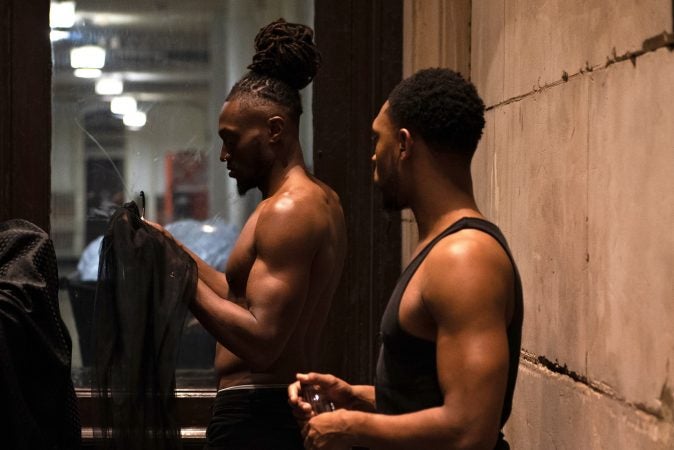
Models prep backstage before the Friday night runway show at Philadelphia Fashion Week, held at Dilworth Park. (Kriston Jae Bethel for WHYY)
-
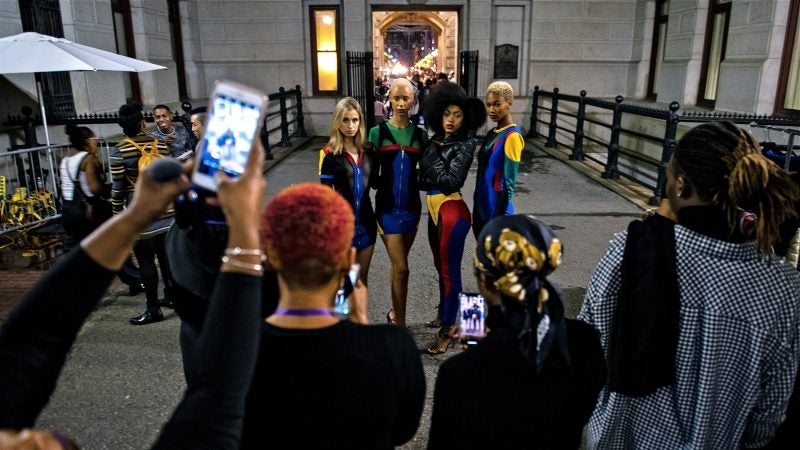
Models stand for a group photo backstage at Philadelphia Fashion Week, held at Dilworth Park. (Kriston Jae Bethel for WHYY)
-
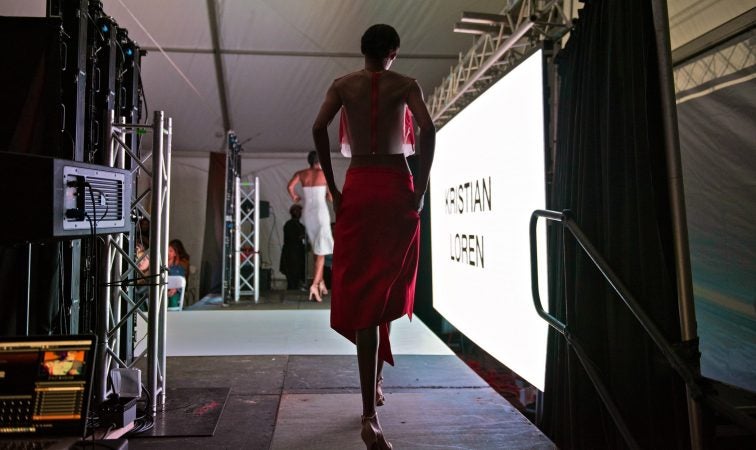
A model steps out to the runway at Philadelphia Fashion Week, held at Dilworth Park. (Kriston Jae Bethel for WHYY)
-
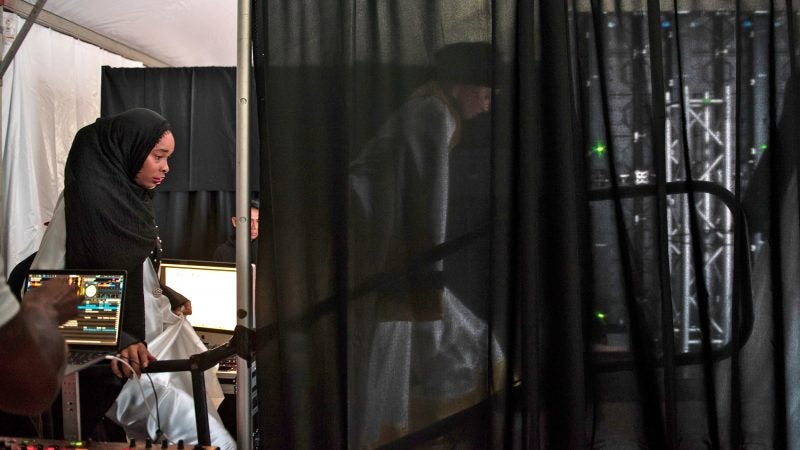
Models step up to the runway at Philadelphia Fashion Week, held at Dilworth Park. (Kriston Jae Bethel for WHYY)
-
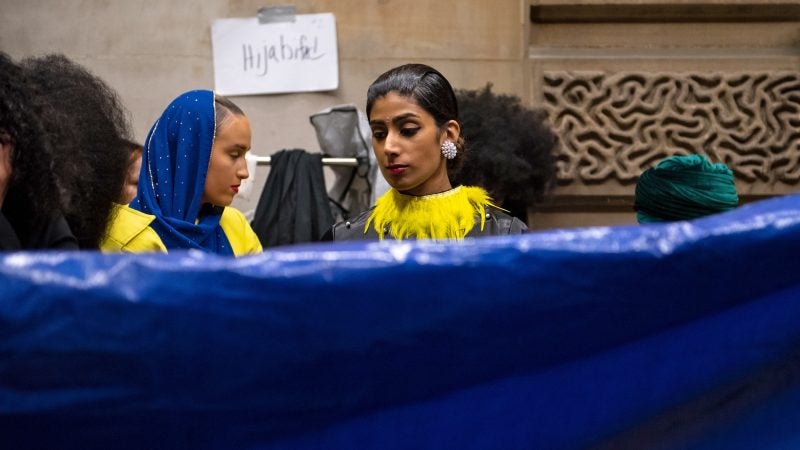
Models wait backstage as a tarp is laid out to prevent tearing at Philadelphia Fashion Week, held at Dilworth Park. (Kriston Jae Bethel for WHYY)
-

Designer Symone Gaither helps a model off the runway at the conclusion of Friday's show at Philadelphia Fashion Week, held at Dilworth Park. (Kriston Jae Bethel for WHYY)
-
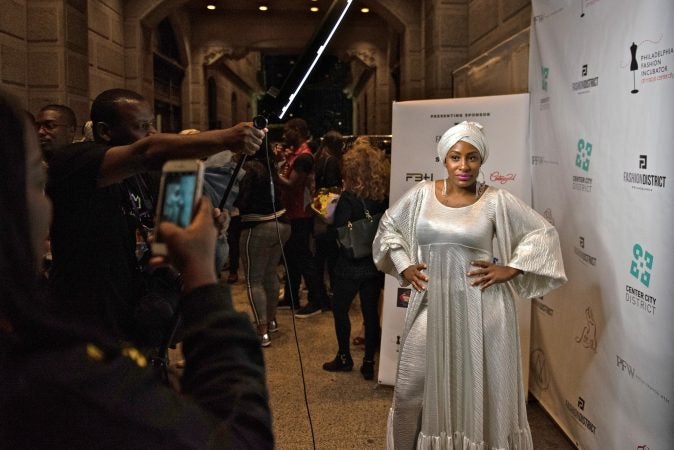
A Philadelphia Fashion Week attendee posses for her own photoshoot following Friday night's runway show, held at Dilworth Park. (Kriston Jae Bethel for WHYY)
New York. Paris. London. Milan.
These are the undisputed fashion capitals of the world, and their respective fashion weeks have an indelible influence on style.
But Philadelphia Fashion Week sets itself apart from those long-running staples through its total embrace of diversity and inclusion.
Behind the runway, models sprint for quick changes, stylists touch up hair, and designers make last-minute adjustments to their lineups. The whole scene is a reflection of the city’s diversity.
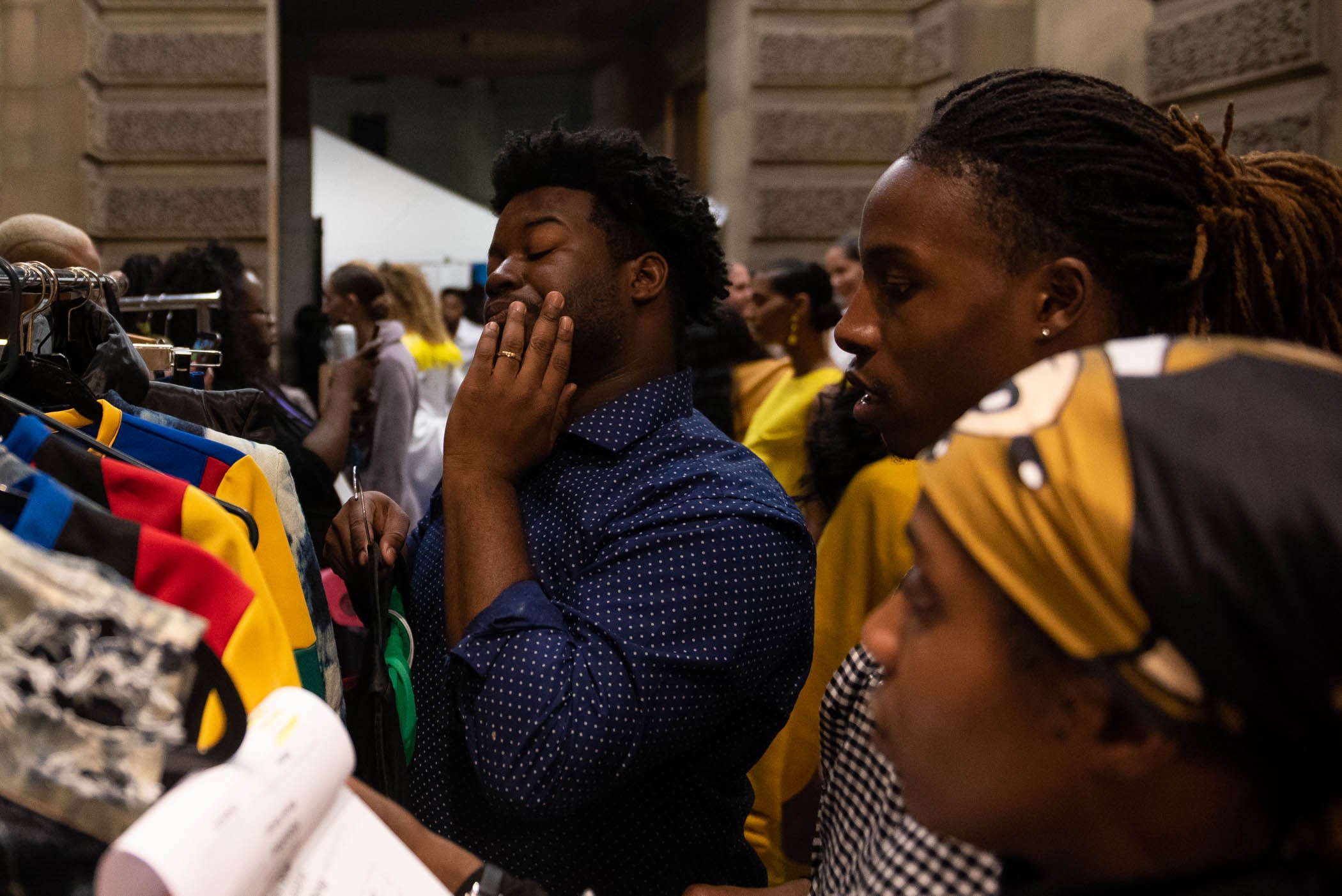
Here, people of color are the norm, rather than a rarity. Body types run the gamut of what you’d expect to see as you walk down the street. People of all ages can find a role in the show.
“It’s great they give a lot of women of color opportunities,” said Rita Randolph, who works as the backstage lead assistant. “A lot of women of color are disappointed [at other shows], because they’ll pick just one.”
Even the clothes on display reflect that spirit of diversity, perhaps none more so than modest-wear line Hijabified.
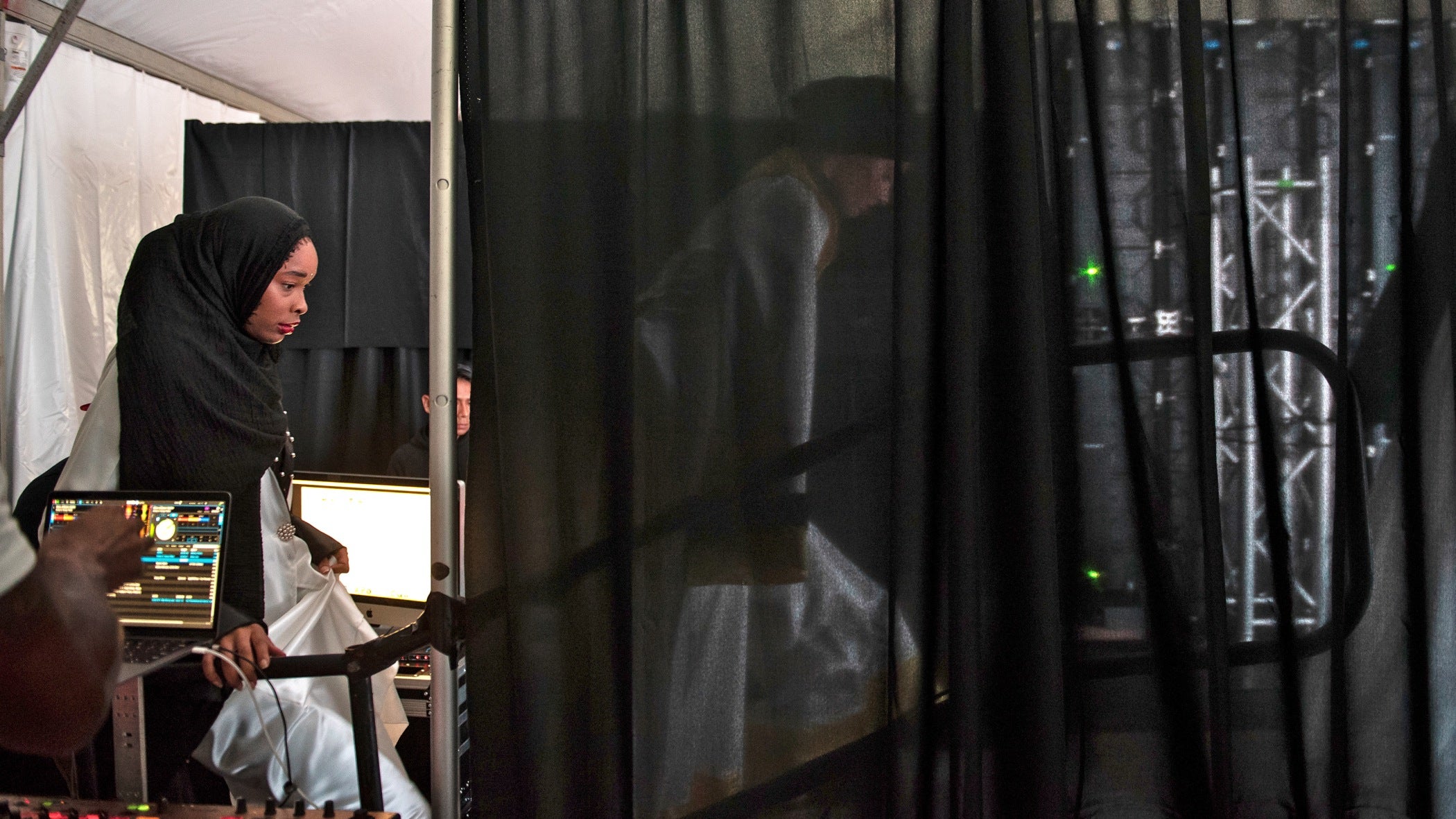
“I want people to be confident, not feel that they don’t exist because they’re covered,” said Niddarah Winters, Hijabified’s North Philadelphia designer. “You can be covered and still be cute. Cute. Covered. Modest.”
What is perhaps a result of this inclusion is an expanded audience. High fashion becomes accessible to everyone who wants to spot what could be the next big trend. The continued growth of Philadelphia Fashion Week demonstrates that the industry can expand beyond tokenism — and be successful while doing so.
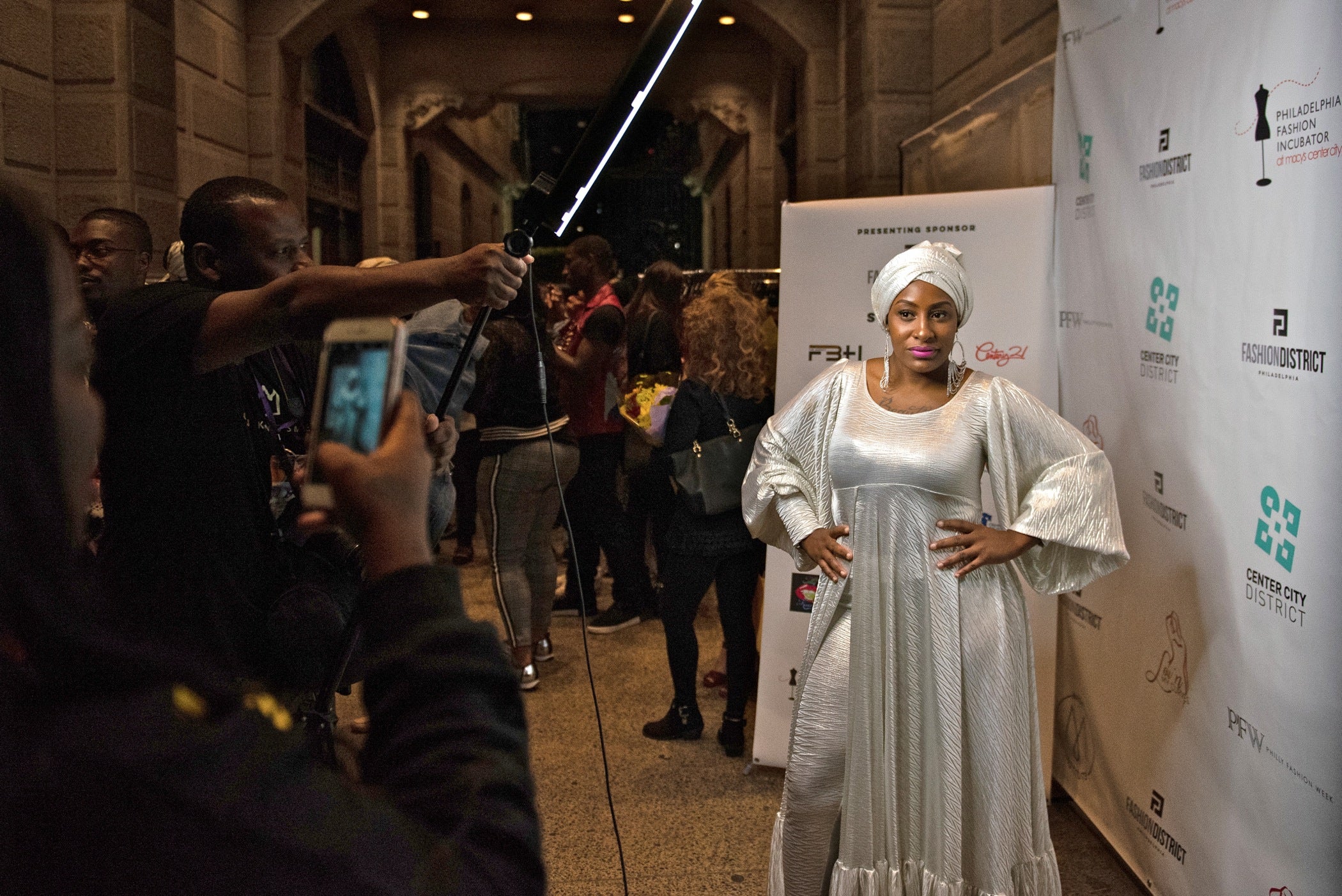
WHYY is your source for fact-based, in-depth journalism and information. As a nonprofit organization, we rely on financial support from readers like you. Please give today.


